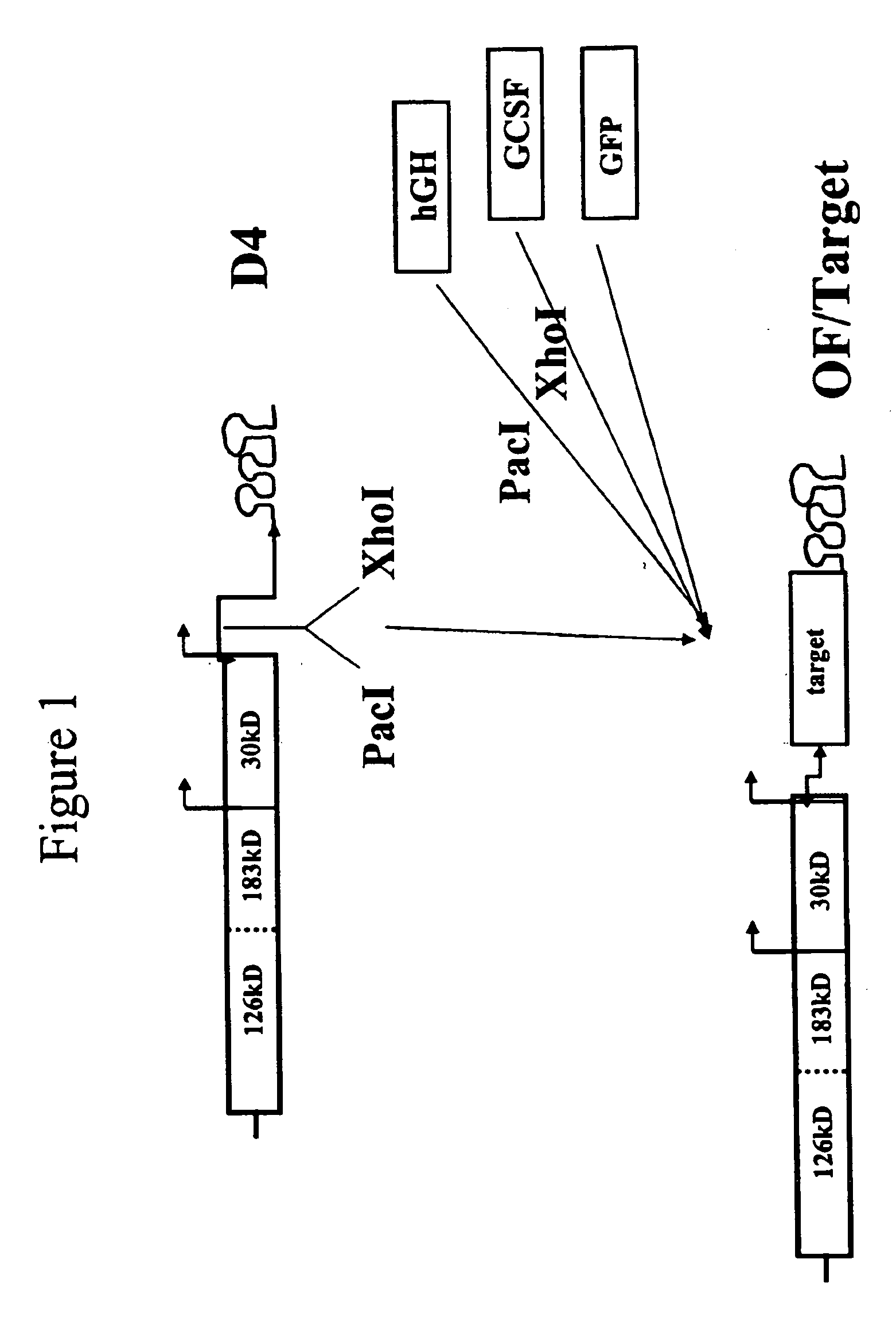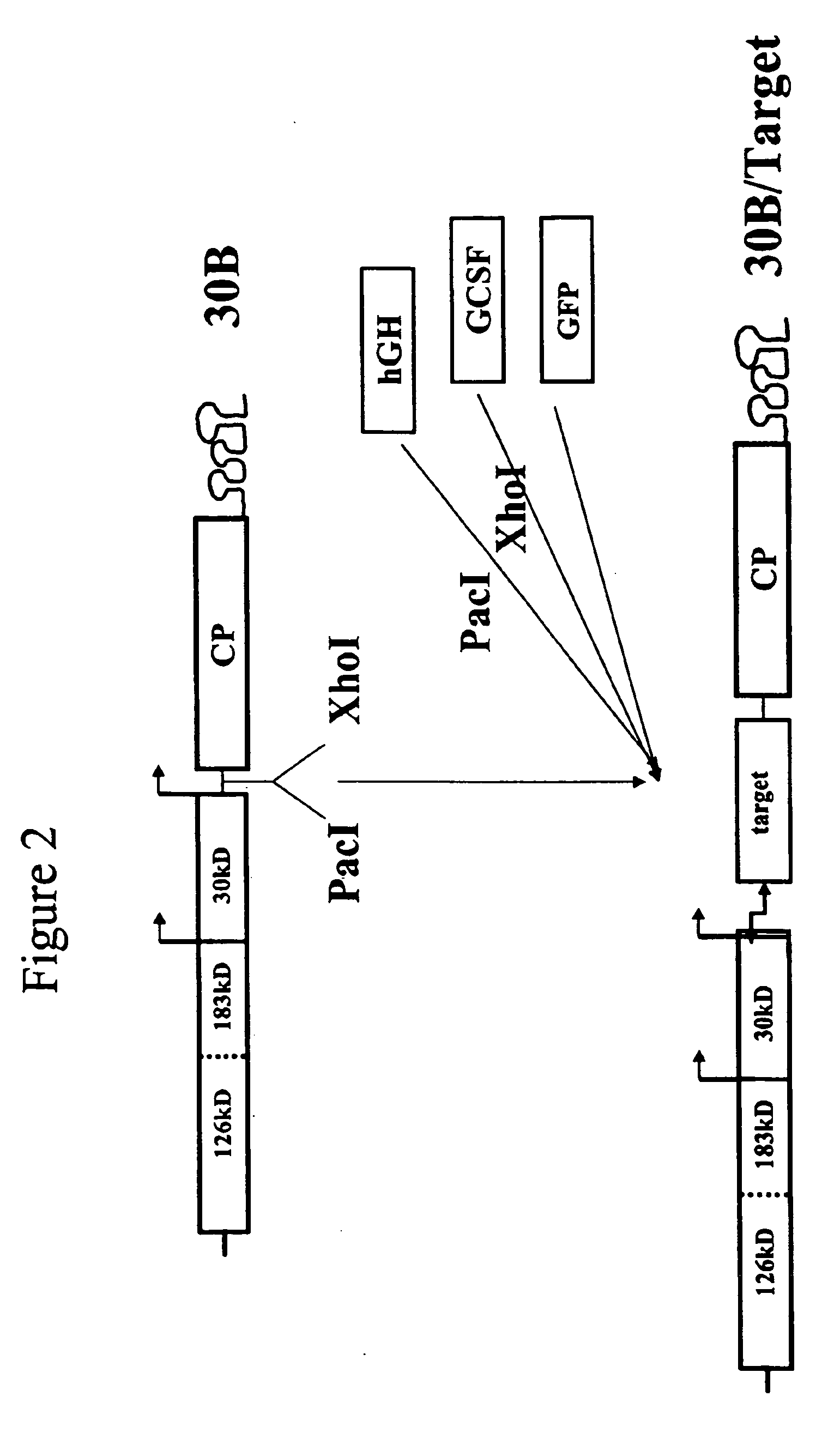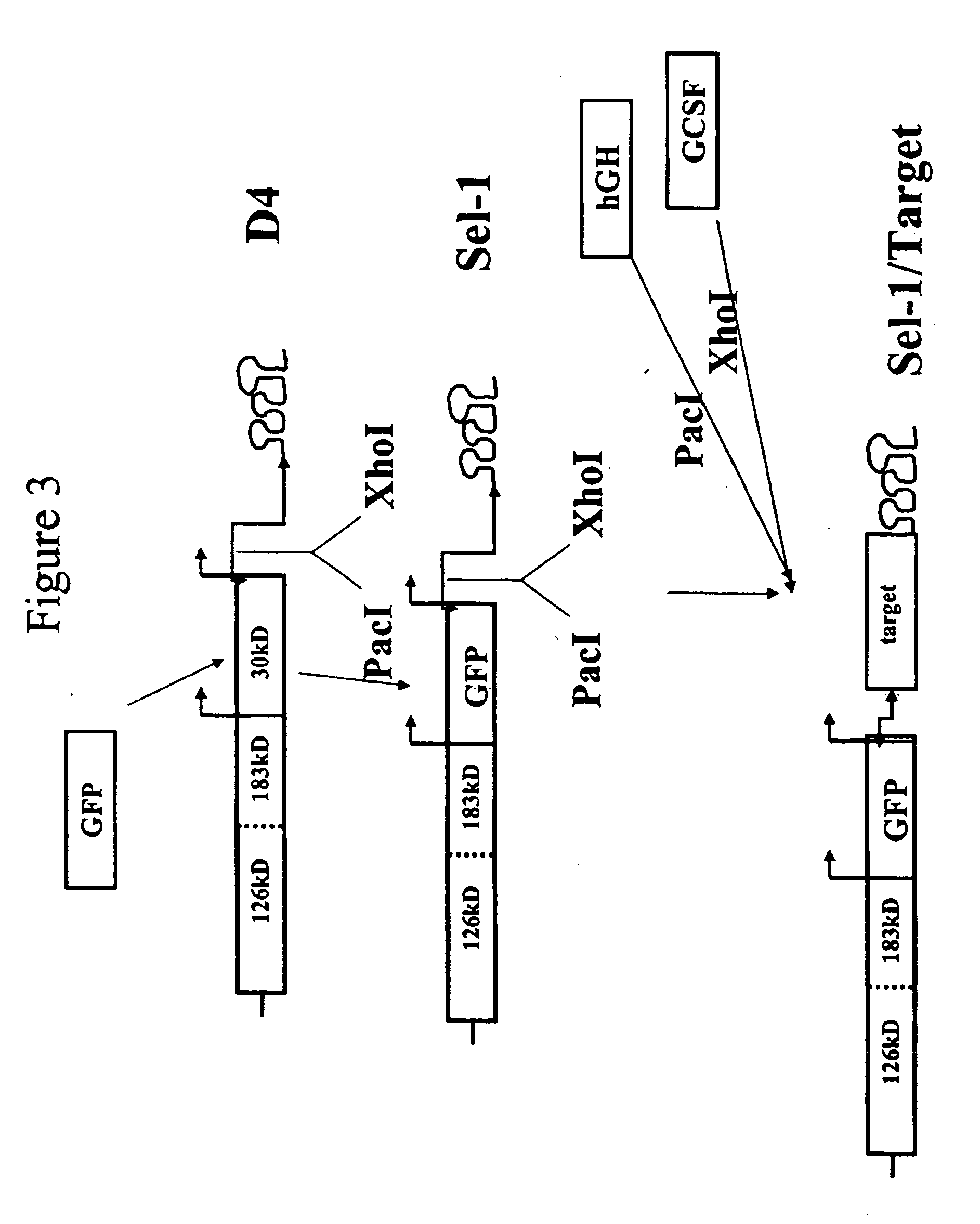Systems and methods for clonal expression in plants
a technology of plant clonal expression and system, applied in the field of systems and methods for clonal expression in plants, can solve the problems of limited availability of therapeutics and vaccines for prevention and treatment of many diseases around the world, limited the availability of therapeutics and vaccines for many diseases, and the platform has its limitations, so as to reduce the cell concentration
- Summary
- Abstract
- Description
- Claims
- Application Information
AI Technical Summary
Benefits of technology
Problems solved by technology
Method used
Image
Examples
example 1
Construction of Recombinant Plant Virus Vectors
[0156] We employed vectors based on the Tobacco Mosaic Virus that are adapted for insertion of a polynucleotide of interest to create a vector for use in generating clonal root lines, clonal root cell lines, clonal plant cell lines, and / or clonal plants that express a polynucleotide of interest according to the present invention. FIG. 1 shows a schematic diagram of a TMV-based vector, D4, that was engineered to accept insertion of a polynucleotide of interest (Shivprasad et al., Virology, 255(2):312-23, 1999), and illustrates insertion of various polynucleotides of interest into the vector. D4 contains a deletion of the TMV coat protein (CP) coding sequences but retains the TMV CP subgenomic promoter and the TMV 3′ untranslated region (UTR), as indicated on the figure. The 126 and 183 kD proteins are required for TMV replication. The 30 kD protein is movement protein (MP), used for cell-to-cell movement. D4 contains Pac I and Xho I sit...
example 2
Generation and Testing of Clonal Root Lines Expressing GFP
[0165] Materials and Methods
[0166] Synthesis of viral transcripts and viral infection. In vitro transcripts of vector D4C3GFP, described above, which contains an open reading frame encoding GFP under control of the TMV CP subgenomic promoter, were synthesized using T7 polymerase. Approximately 10 μg of DNA was linearized with 30 units of KpnI overnight in a reaction volume of 100 μl. Four μl of the restriction digest was used to produce in vitro transcripts using the AmpliCap T7 High Yield message Maker Kit (Epicentre) according the manufacturers recommendations. Transcripts from one such reaction were used to infect six-week-old Nicotiana benthamiana plants by manually applying the transcripts dissolved in FES onto young, fully expanded leaves.
[0167]Agrobacterium rhizogenes stimulated root generation. Agrobacterium rhizogenes strain A4RSII was grown to OD600 0.8-1. Bacterial cells were pelleted and resuspended in MS-2 med...
example 3
Generation and Testing of Clonal Root Lines Expressing hGH
[0176]N. benthamiana plants were inoculated with a TMV-based vector, D4-hGH, containing an open reading frame encoding hGH under control of the TMV CP subgenomic promoter. Hairy roots were obtained and subcultured essentially as described in Example 2. Two weeks after separation from leaf discs, during the third round of subculture, the segments of roots were analyzed for hGH expression by Western blot assay (FIG. 9) essentially as described in Example 2. Five ng hGH protein (Research Diagnostics) was used as a control in all Western blots in which expression of hGH was tested. Anti-hGH antibodies were from Research Diagnostics. As can be seen from FIG. 9, up to 80% of the clonal root lines had detectable levels of hGH. We selected the highest producers and propagated them further. After 10 passages (subculturings), samples were taken and analyzed for hGH accumulation. FIG. 10 shows a Western blot, demonstrating that the clo...
PUM
 Login to View More
Login to View More Abstract
Description
Claims
Application Information
 Login to View More
Login to View More - R&D
- Intellectual Property
- Life Sciences
- Materials
- Tech Scout
- Unparalleled Data Quality
- Higher Quality Content
- 60% Fewer Hallucinations
Browse by: Latest US Patents, China's latest patents, Technical Efficacy Thesaurus, Application Domain, Technology Topic, Popular Technical Reports.
© 2025 PatSnap. All rights reserved.Legal|Privacy policy|Modern Slavery Act Transparency Statement|Sitemap|About US| Contact US: help@patsnap.com



